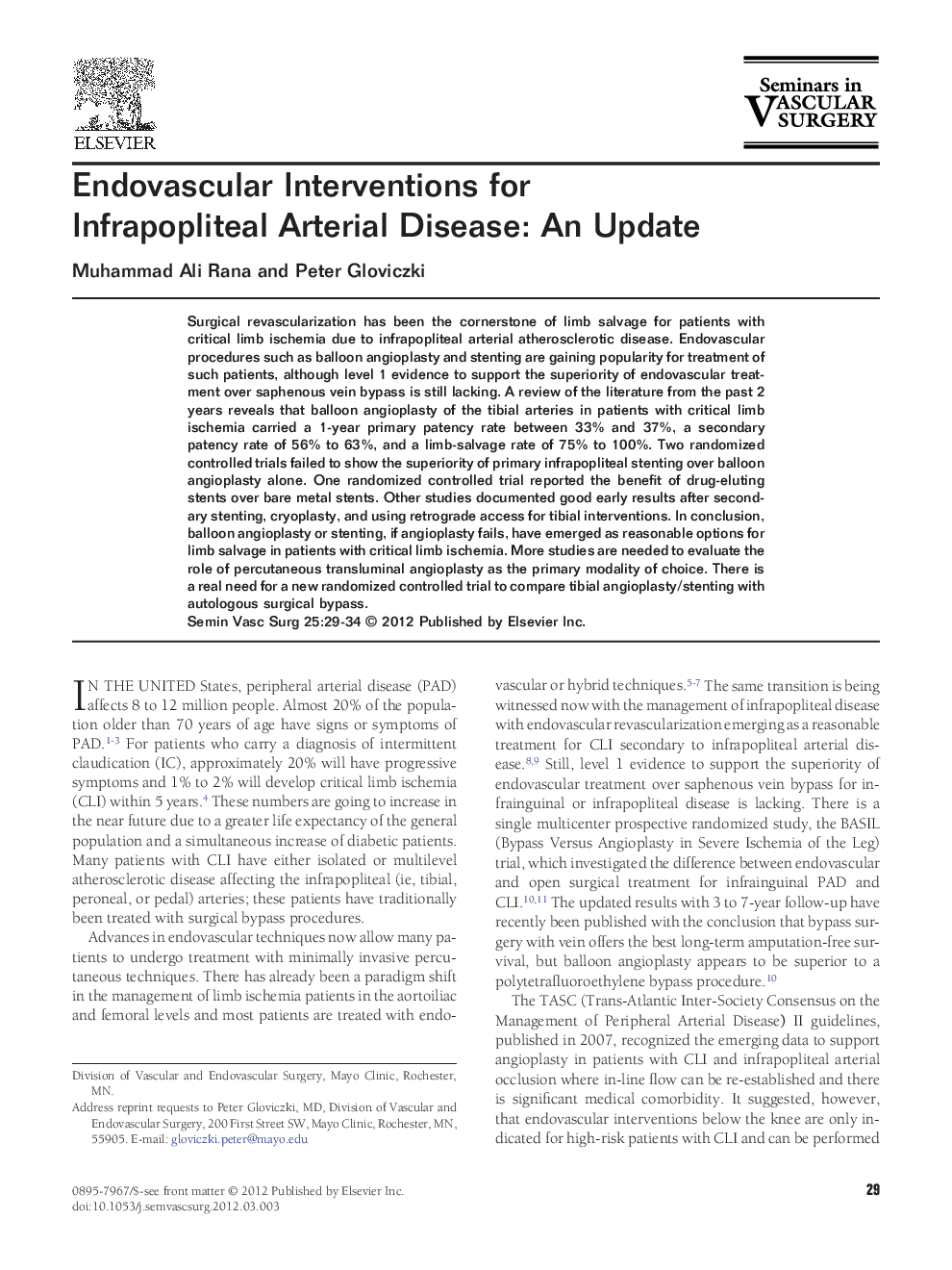| Article ID | Journal | Published Year | Pages | File Type |
|---|---|---|---|---|
| 3026181 | Seminars in Vascular Surgery | 2012 | 6 Pages |
Surgical revascularization has been the cornerstone of limb salvage for patients with critical limb ischemia due to infrapopliteal arterial atherosclerotic disease. Endovascular procedures such as balloon angioplasty and stenting are gaining popularity for treatment of such patients, although level 1 evidence to support the superiority of endovascular treatment over saphenous vein bypass is still lacking. A review of the literature from the past 2 years reveals that balloon angioplasty of the tibial arteries in patients with critical limb ischemia carried a 1-year primary patency rate between 33% and 37%, a secondary patency rate of 56% to 63%, and a limb-salvage rate of 75% to 100%. Two randomized controlled trials failed to show the superiority of primary infrapopliteal stenting over balloon angioplasty alone. One randomized controlled trial reported the benefit of drug-eluting stents over bare metal stents. Other studies documented good early results after secondary stenting, cryoplasty, and using retrograde access for tibial interventions. In conclusion, balloon angioplasty or stenting, if angioplasty fails, have emerged as reasonable options for limb salvage in patients with critical limb ischemia. More studies are needed to evaluate the role of percutaneous transluminal angioplasty as the primary modality of choice. There is a real need for a new randomized controlled trial to compare tibial angioplasty/stenting with autologous surgical bypass.
